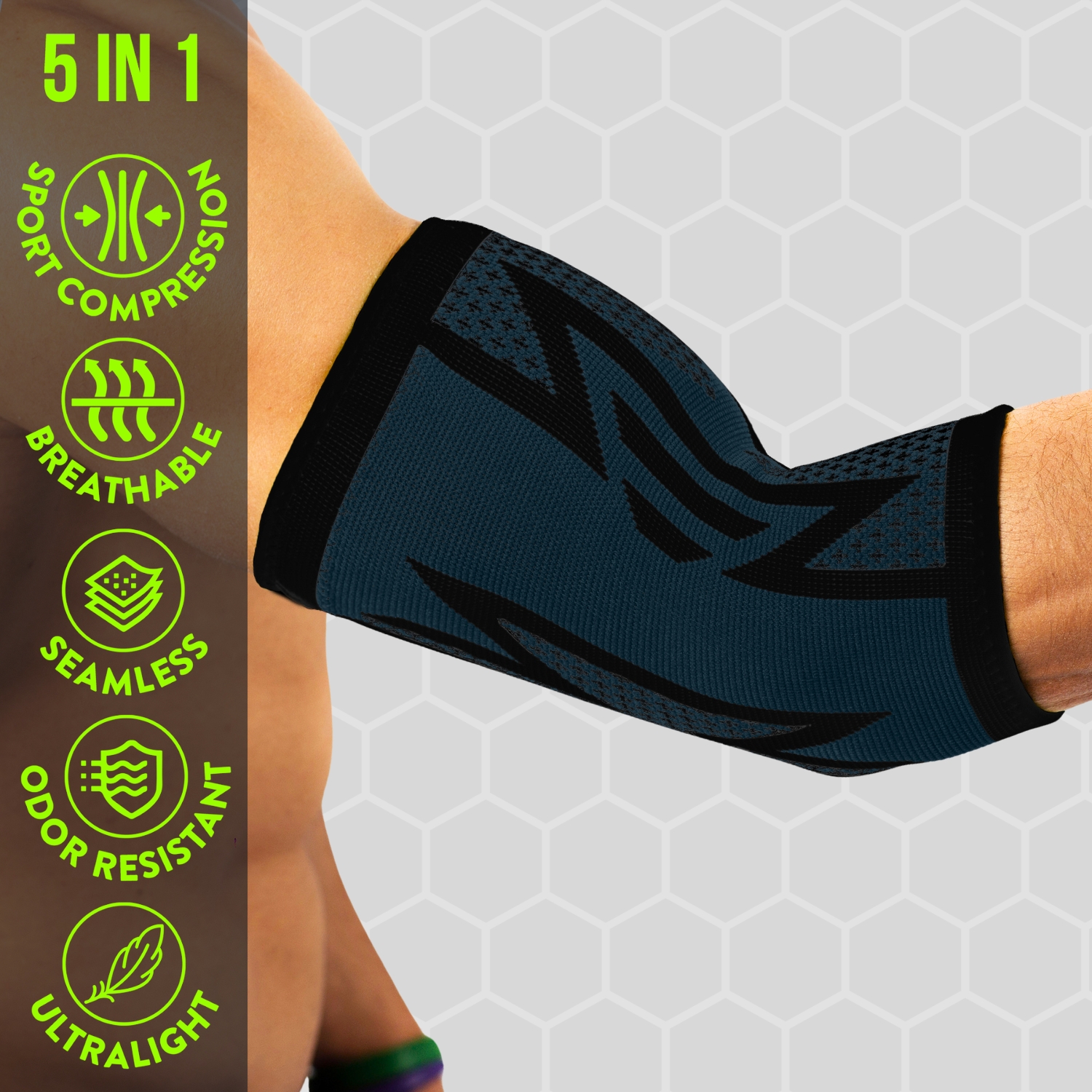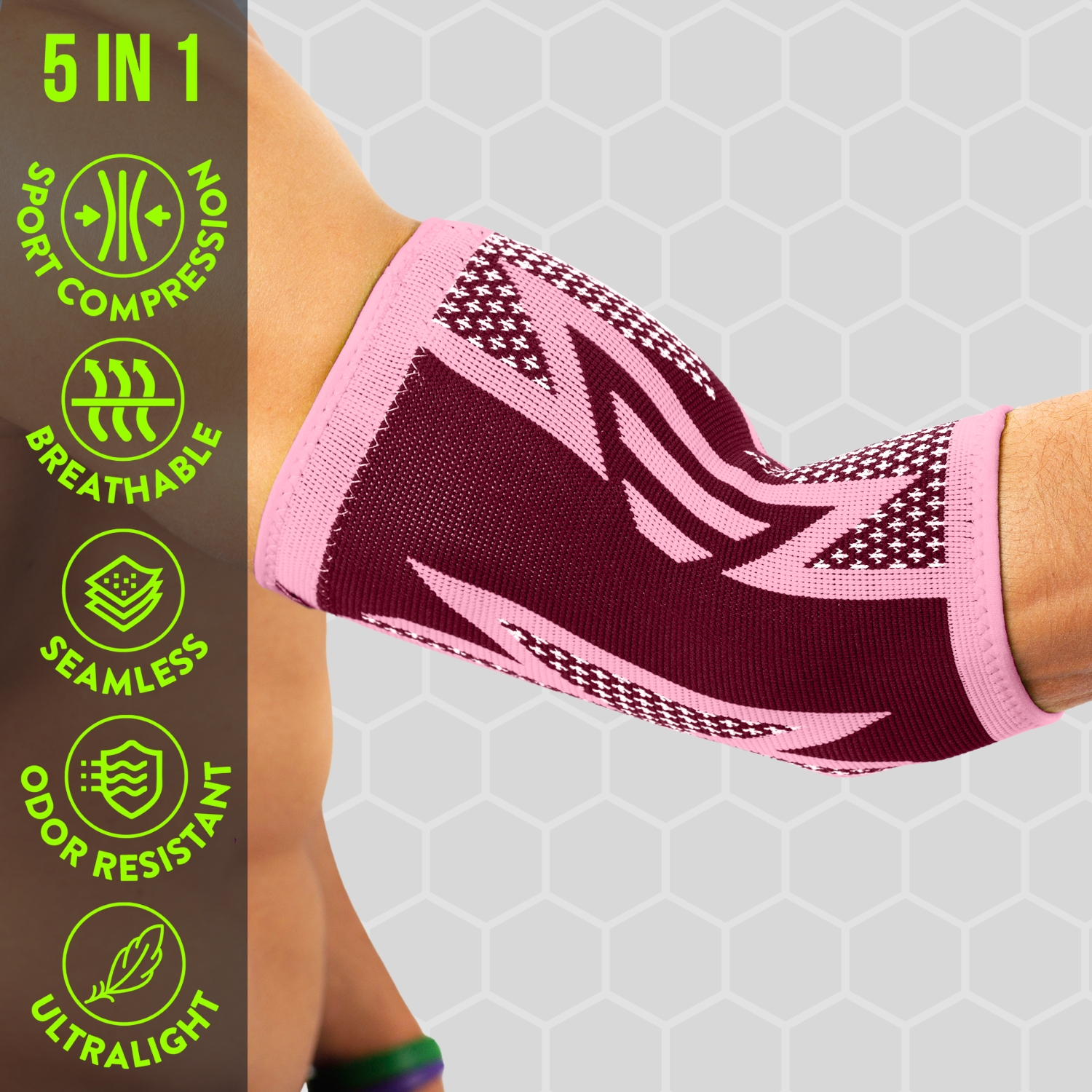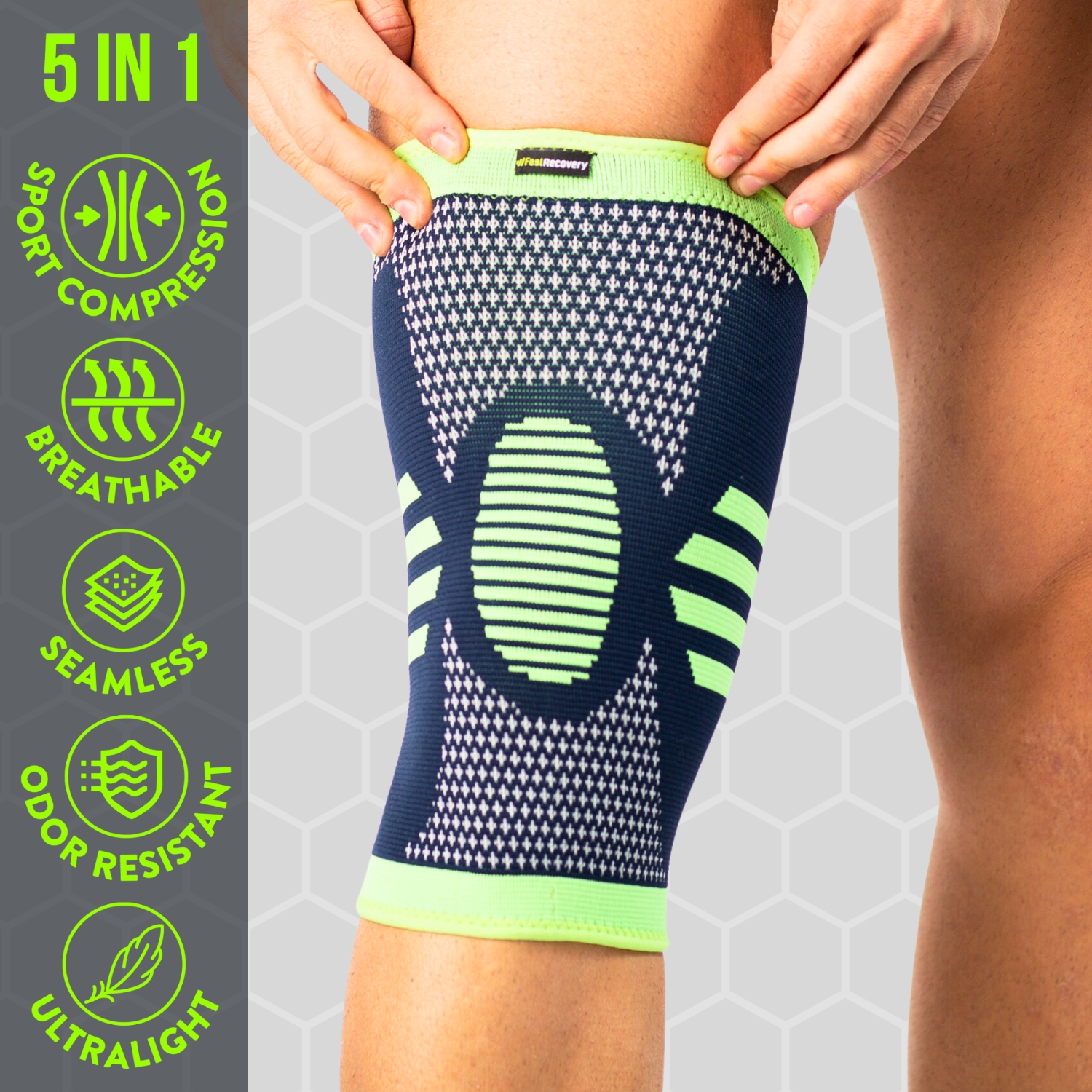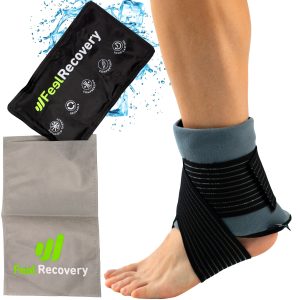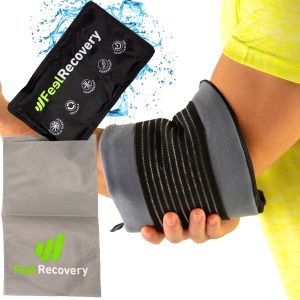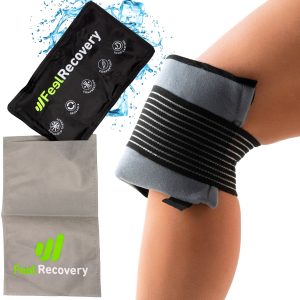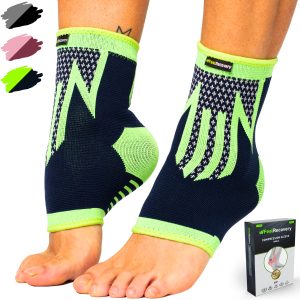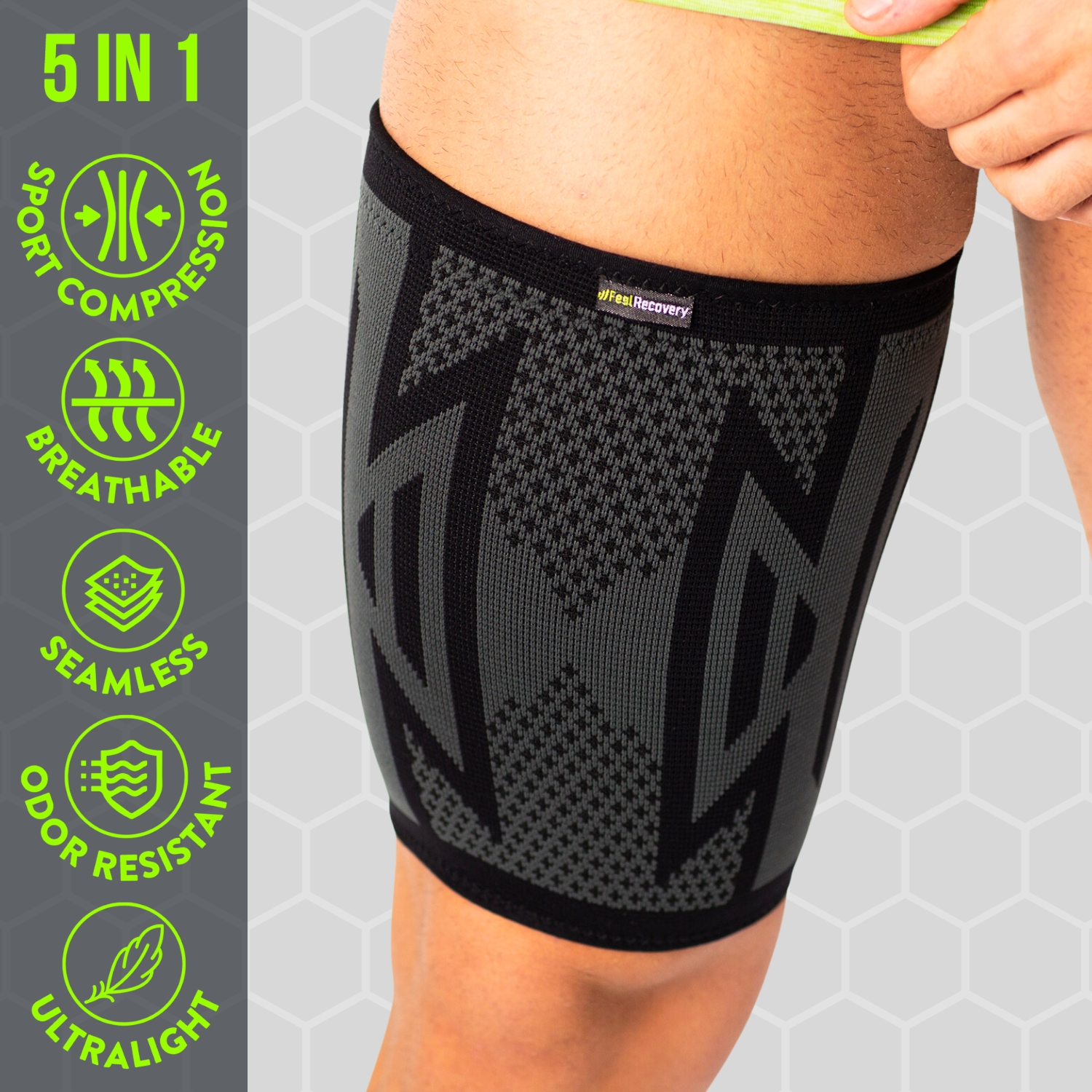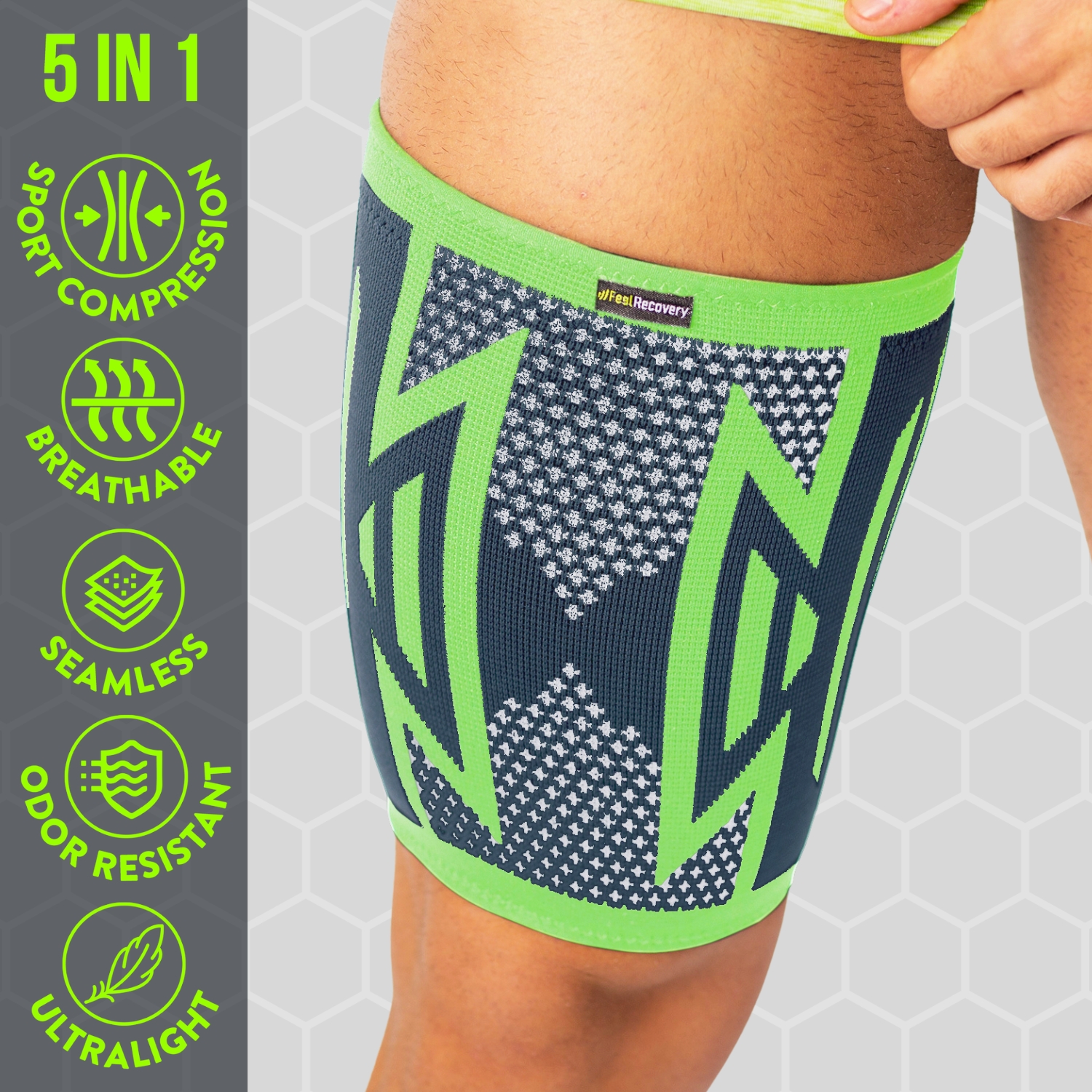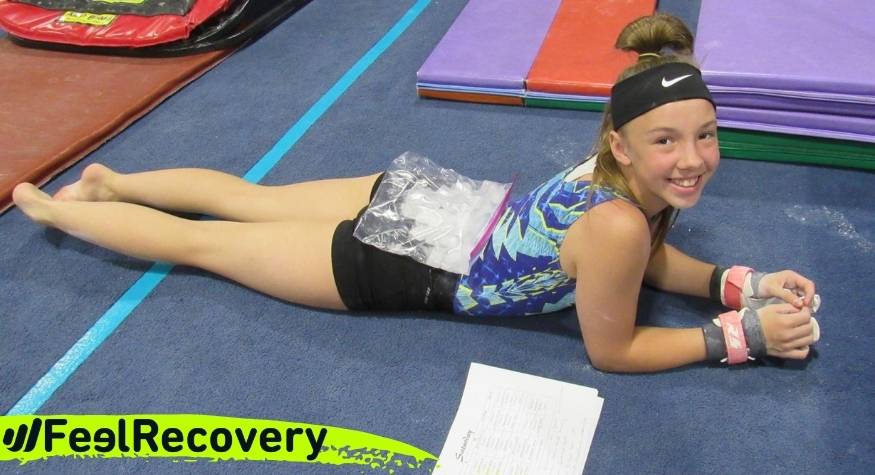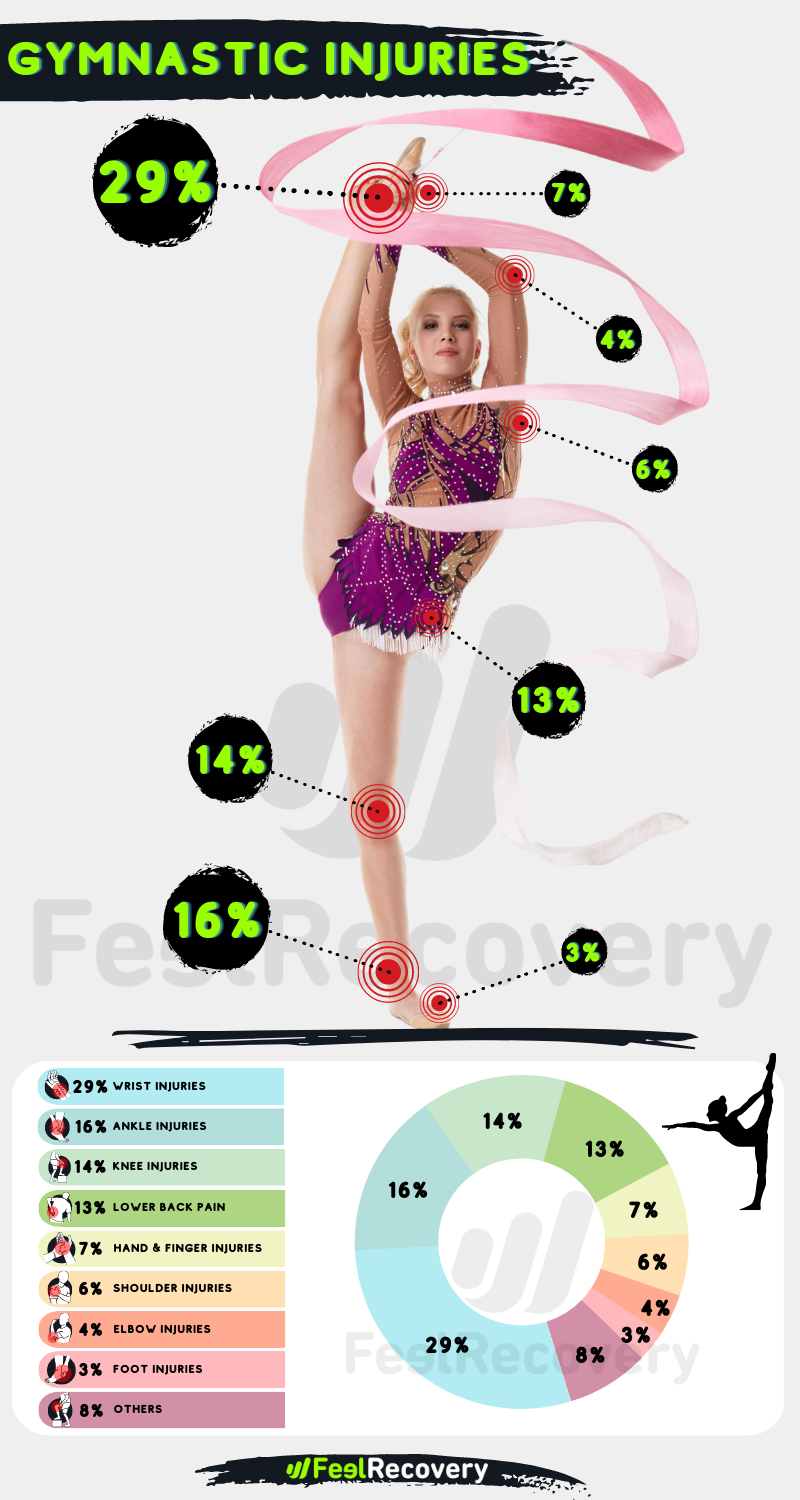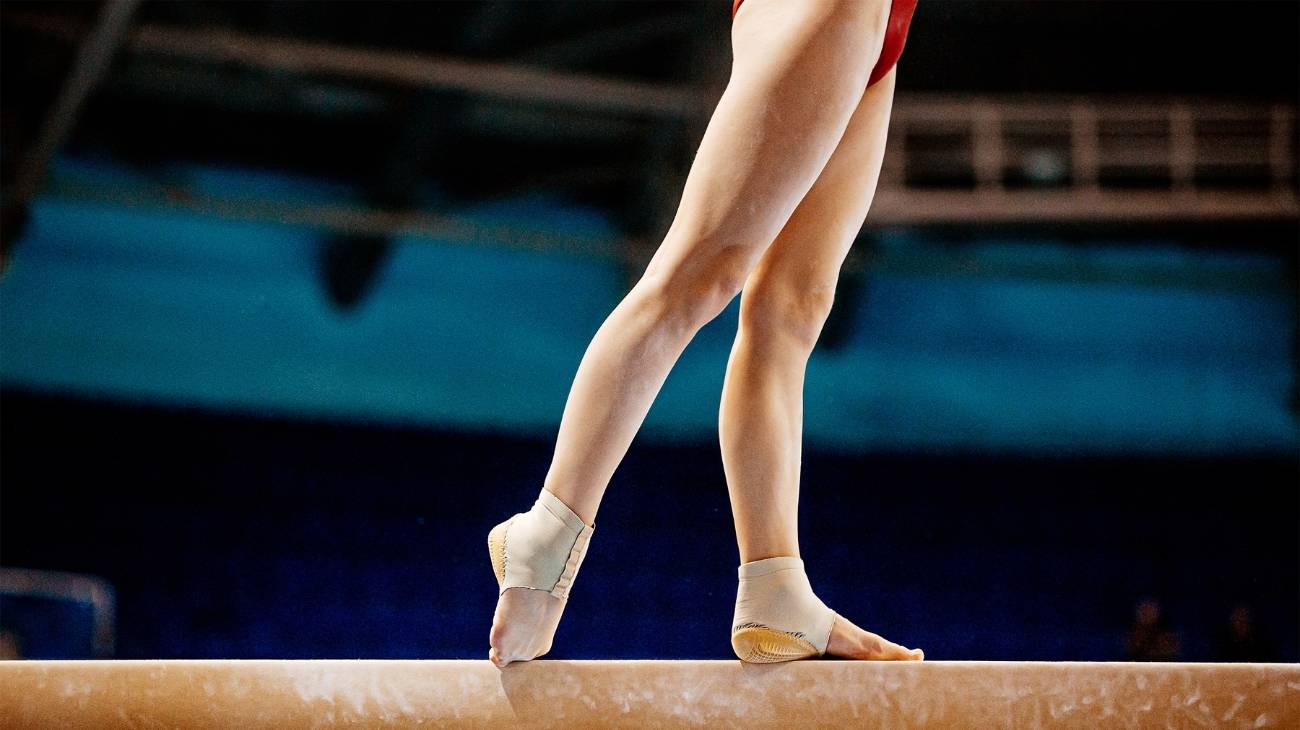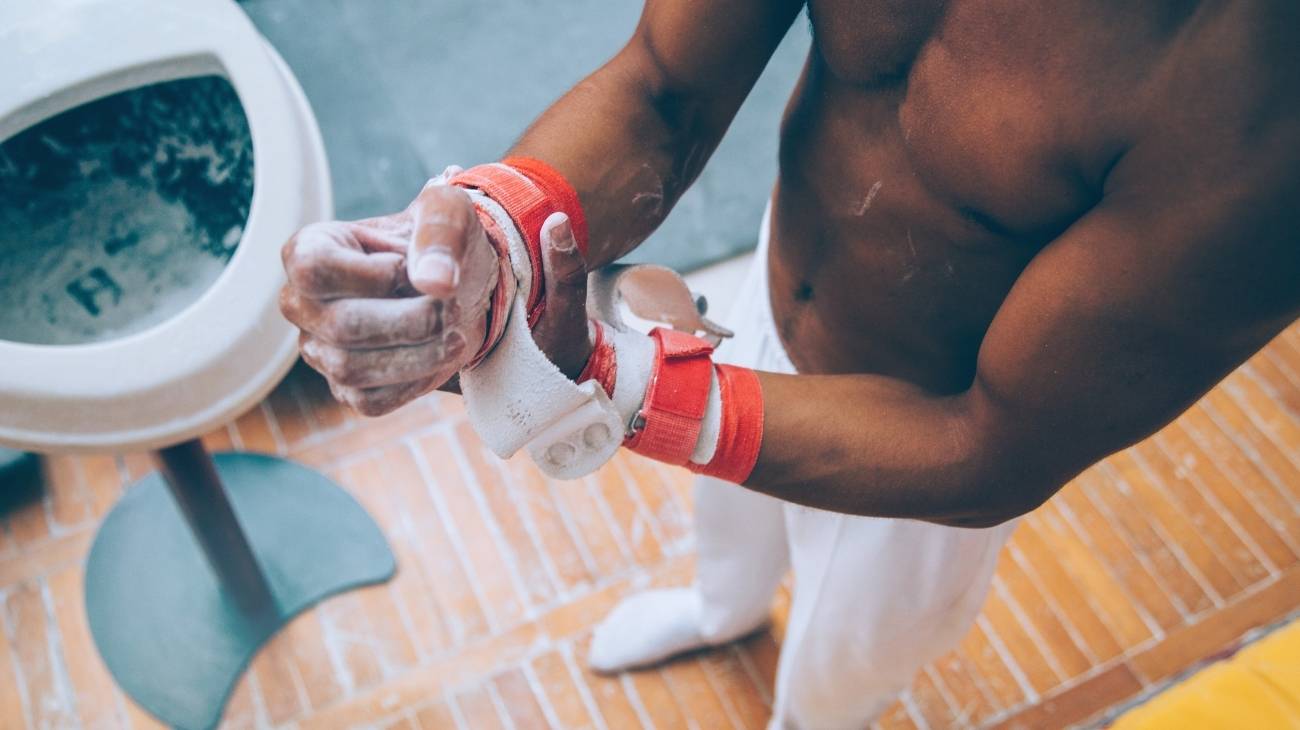- What are the most common types of injuries when practising gymnastics?
- Best products for gymnastics injury recovery
- How to prevent injuries when practising rhythmic gymnastics or sports gymnastics?
- How to apply the RICE therapy to treat first aid injuries in gymnastics?
- When should we see a specialist for treatment of gymnasts' injuries?
Gymnastics is a sport that requires concentration and discipline. As in any other sport, it requires hard training and a lot of work on muscles and joints, and above all it is necessary to be 100% focused so that the whole body is fit, as the demand is not only physical but also mental because of the danger it represents.
Being such a physically and mentally demanding sport, injuries are very present in any of its modalities. That is why in the following article we are going to show you the most common injuries that a gymnast can suffer, as well as the most effective methods of prevention and recovery.
What are the most common types of injuries when practising gymnastics?
Due to the demands placed on our bodies when practising gymnastics, it is possible that we may suffer an injury, either in the warm-up or in a competition. Here we will show you which injuries commonly affect gymnasts.
Lumbar spondylosis
Spondylosis is the most common injury affecting gymnasts. Because gymnasts have to extend their back many times and repeatedly, this movement causes the laminae of the vertebrae to break down, separating the joint from the rest of the vertebrae. Although many people are born with this type of defect, others develop it as a result of playing certain sports, including gymnastics.
The main symptom is severe pain in the lower back, sometimes even pain in the buttocks. As it is not an ailment that appears by a fortuitous action, it is also important that you go to a physiotherapist so that he can evaluate your body in depth and thus have a more accurate diagnosis.
Low back pain
Gymnastics is an almost symmetrical sport, so bending or arching the back to perform a series of movements is common in each of the exercises. Therefore, we must exercise the lower back correctly before each routine, warm up properly so as not to damage the ligaments, and prepare them for the demands they will be subjected to.
This injury can cause discomfort in the athlete, but it is important that once diagnosed, we proceed to comply with the required rest, because if we do not give the muscle rest for recovery, we could suffer from lumbar injuries in the long term. Pain caused by low back pain is usually treated with rest.
Labral tear
Labral labrum injury is a shoulder injury that occurs very frequently in gymnasts, especially those who practice barbells or rings, due to the impact generated on the joint.
This injury is also known as a SLAP injury, which shows that the labrum has torn from the anterior shoulder to the posterior shoulder, resulting in severe shoulder pain. The causes of this injury can be falls on the shoulder blade, on the outstretched arm, or from repetitive overhead movements.
Elbow dislocation
This is the second most common dislocation after shoulder dislocation, and gymnastics is one of the main disciplines in which it occurs. This injury is caused by the separation between the humerus, ulna and radius bones, and will be very noticeable as the elbow will be slightly deformed because some of the bones will be out of joint.
In gymnastics it is often caused by falling on the outstretched hand. When this happens, the humerus is in incorrect alignment with the joint. The elbow can also be dislocated when performing backward jumps, because in these routines we support the hand with our arm outstretched. Once this injury has been diagnosed, it is important to have an x-ray to rule out ligament tears.
Wrist sprain
Wrist sprains commonly affect gymnasts, as the joint is exposed to repetitive movements that generate a force stress twice the weight of the body.
Wrist sprain is produced by the strong stretching of the ligaments that are supporting the joint. It is very easy to diagnose it, because of the pain that appears when any movement is made. This injury can be easily treated, but it is also important to treat it at the time and not to postpone it, as it could become a chronic ailment that could have serious consequences.
Cruciate ligament injury
This injury is due to the tearing of the ligaments that stabilise the knee joint, the function of which is to hold the femur and tibia bones together. When the ligaments are torn, people hear a snapping sound in the knee, followed by severe pain that prevents them from walking.
Among the main causes of this injury are a sudden change of direction at speed, poor support on the lower limb when falling after a jump or simply a direct blow to the knee.
Ankle sprain
This injury occurs when the joint performs a movement that by nature it cannot do, which generates an exaggerated extension of the ligaments that ends up tearing them partially or completely. If you practice gymnastics, you will probably know that it is often necessary to use an ankle brace or ankle support that can protect you from sprains or strains when you land on your feet.
Sprains are generally a high and common occurrence in the gymnastics community. That's why you should have an exercise routine that allows you to train the way your foot should impact the ground, this will greatly reduce the risk of injury.
Achilles tendon rupture
Achilles tendon rupture is also an injury that affects gymnasts. In the jumping routine, we must have a good landing position, as it is our tendon that cushions all those blows, so it is important to "know how to land well".
Our tendon is responsible for propelling us when we walk, so it is subjected to enormous workloads. Once this tendon is ruptured, it is almost impossible to walk due to the pain that is generated when moving the foot. So before starting your routines, it is important to warm up the Achilles tendon well, and you should even wear suitable shoes to avoid an injury like this one.
Best products for gymnastics injury recovery
Bestseller
-
2 Elbow Compression Sleeve (Black/Gray)
$24.95 -
2 Elbow Compression Sleeve (Green/Navy)
$24.95 -
2 Elbow Compression Sleeve (Pink/Bordeaux)
$24.95 -
2 Knee Compression Sleeve (Green/Navy)
$24.95 -
Microwave Heating Pad for Neck & Shoulder Pain Relief (Hearts)
$29.95 -
Microwave Heating Pad for Neck & Shoulder Pain Relief (Oxford)
$29.95 -
Microwave Heating Pad for Neck & Shoulder Pain Relief (Sport)
$29.95 -
Microwave Heating Pad for Neck Pain Relief (Hearts)
$24.95 -
Microwave Heating Pad for Neck Pain Relief (Oxford)
$24.95 -
Microwave Heating Pad for Neck Pain Relief (Sport)
$24.95 -
Microwaveable Heating Pad for Pain Relief (Hearts)
$24.95 -
Microwaveable Heating Pad for Pain Relief (Oxford)
$24.95 -
Microwaveable Heating Pad for Pain Relief (Sport)
$24.95
-
2 Ankle Compression Sleeve (Black/Gray)
$24.95 -
2 Ankle Compression Sleeve (Green/Navy)
$24.95 -
2 Ankle Compression Sleeve (Pink/Bordeaux)
$24.95 -
2 Knee Compression Sleeve (Black/Gray)
$24.95 -
2 Knee Compression Sleeve (Pink/Bordeaux)
$24.95 -
2 Thigh Compression Sleeve (Black/Gray)
$24.95 -
2 Thigh Compression Sleeve (Green/Navy)
$24.95 -
2 Thigh Compression Sleeve (Pink/Bordeaux)
$24.95 -
Foot Massage Roller for Plantar Fasciitis (Black)
$24.95 -
Foot Massage Roller for Plantar Fasciitis (Green)
$24.95 -
Foot Massage Roller for Plantar Fasciitis (Pink)
$24.95 -
Ice Massage Roller Ball (Black)
$39.95 -
Ice Massage Roller Ball (Green)
$39.95 -
Ice Massage Roller Ball (Pink)
$39.95 -
Soft Density Foam Roller for Recovery (Black)
$39.95 -
Soft Density Foam Roller for Recovery (Green)
$39.95 -
Soft Density Foam Roller for Recovery (Pink)
$39.95
How to prevent injuries when practising rhythmic gymnastics or sports gymnastics?
Great gymnasts like Simone Biles or Carlos Yulo, have a routine that allows them to prevent the different injuries that usually appear when they train or compete. Whether you do this activity as an amateur or with professional aspirations, it is essential that you know the right way to prepare your body.
Warm up
Warming up is essential when doing an activity as demanding as gymnastics, as your muscles and joints must be prepared, not only to perform the jumps, but also to withstand the landing. This warm-up will depend on the type of gymnastics being practised, be it artistic, rhythmic or any other.
The basic exercises to prepare your body for a training session are:
- Articulated stretching: each muscle and joint is stretched to give elasticity to the tendons and ligaments that compose it, so that the blood flow in them is the best possible, they are prepared for all the stress they will receive.
- Short run for 10 minutes: as a way of activating the entire cardiac system so that it proceeds to better circulate the blood throughout the body and we are more lucid and with perfectly lubricated muscles.
- Muscle memory exercises: before attempting a jump or acrobatics, it is best to simulate them in a slow and controlled way to activate the muscle memory so that when doing them at high speed we can take off and land in a good way.
Stretching should be done in an orderly fashion, starting with the lower joints such as the ankles and knees, and ending with the higher joints such as the neck and shoulders.
Cooling down
Cooling down is just as important as warming up, as injuries such as tendonitis or bursitis occur because the muscles and joints have not been released of tension after an intense training session. For this reason we must ensure that the body's cool-down is as progressive as the warm-up. Taking our time to allow the body to return to a state of rest is essential to better assimilate the high doses of lactic acid that we generate during a workout.
In gymnastics, we usually walk or jog gently for a few minutes, and then finish the training session with general stretching of all the muscles and joints that we have activated, so that we release the tension that has accumulated and these can relax before entering a state of total rest.
Good equipment
Gymnastics is a sport in which movements must be precise and agile, so wearing the right equipment will help you perform better and avoid injury. Gymnasts normally wear an outfit called a leotard. These can be long or short, and are always flexible and provide better comfort for movement.
As for shoes, many choose not to wear them. However, they do not allow you to slip when you run and also protect your feet from the impact of falls. It is important that running shoes have non-slip soles as slipping on landing can cause a lot of damage and injury.
Nutrition and hydration
Good nutrition in the diet is of utmost importance to maintain fitness. Gymnastics requires significant agility, so the demand on your body will be high. That is why you should maintain a balanced nutrition in fats, carbohydrates and proteins.
Consuming carbohydrates such as bread and brown rice will provide us with enough energy to withstand arduous training sessions. In the same way, consuming good quality fats such as avocado, nuts, seeds and olive oil is essential, as well as plenty of fruit and vegetables that provide quality nutrients that strengthen muscles in every way. It is advisable to consult a nutritionist who will draw up a nutritional plan according to your specific needs.
Hydration should also be taken into account. During a training session, an athlete in this sport usually consumes at least one litre of water distributed throughout the session in small sips. This will considerably improve the health and endurance of the muscles, avoiding the dreaded muscle cramps due to dehydration.
Fitness
Gymnastics requires a good level of fitness, not only aerobic fitness but also anaerobic fitness. Gymnasts who perform acrobatics on rings and bars will need high muscular endurance and sufficient strength to perfectly control their body weight, which is why they do a lot of calisthenics exercises in addition to their training.
On the other hand, those who practise disciplines such as floor gymnastics will need excellent coordination to land perfectly in each acrobatics, while the exponents of artistic or rhythmic gymnastics require, in addition to strength, a lot of aerobic endurance to maintain the rhythm in a performance.
One of the most important aspects of this sport is flexibility, as athletes, both men and women, must perform different acrobatics pushing their bodies to the limit, therefore excellent elasticity and endurance in muscles and tendons is necessary.
Recovery therapies
Once we have already suffered an injury, we have to bear in mind that recovery also requires certain methods to help us return to action as soon as possible.
The most important of these are:
- Sports Massage: After training or participating in an event, it is important to receive a massage that releases the muscles from tension. This allows you to enter a state of relaxation and keeps the joints free of muscle spasm and pain.
- Use of hot and cold therapies: the use of this type of therapy is widely used in gymnasts' contusions, as the cold helps as a method of de-inflammation of the injury and the heat helps to improve blood circulation, relax the injured muscle and reduce pain.
- Use of compression garments: Compression garments help to keep the muscles stable. Their use generates many advantages for the wearer. They have become very popular among gymnasts, as they support the various joints of the body and facilitate blood circulation.
- Use of acupressure therapies: It is a medicinal technique of Chinese origin that allows treating an area of the body with the fingers, the palms of the hands and the elbow, making pressure on the various specific points where tension accumulates. This method relieves pain in the treated areas and releases the stress to which the muscle can be subjected. In gymnastics, it is used after training and testing activities.
- Use of thermotherapy and cryotherapy: The use of the thermotherapy method (heat) is used to have a vasodilation in the area, with a relaxing effect. On the other hand, cryotherapy (Cold) generates a vasoconstriction effect, and as a result causes an anti-inflammatory, analgesic effect on muscle aches. This method improves the metabolism and absorbs the oedema in case of a blow. This recovery system has favourable results when treating gymnasts' injuries.
How to apply the RICE therapy to treat first aid injuries in gymnastics?
The RICE therapy, recently updated as PRICE, is a series of first aid steps that specialists recommend to treat a traumatic injury in the first few minutes after it occurs.
The steps are as follows:
- Protection: depending on the type of injury, the area is protected with a bandage in the case of a sprain or dislocation, or even splinted with a tourniquet in the case of a fracture. This is to ensure that the gymnast does not suffer a new blow that could aggravate the pain and similar injury.
- Rest: until the extent of the injury is known, the affected limb should be rested and not used as much as possible. If it is in the lower limbs, it is recommended to use support instruments such as crutches so as not to dislocate the leg.
- Ice: ice is a great ally for gymnasts as it helps to reduce the inflammation generated in the first moments of the injury, and also relieves pain.
- Compression: with a bandage or the use of a compression garment for the affected area, pressure is applied to the injury so that the inflammation does not continue to progress, always taking care not to squeeze too tightly as this could damage the blood vessels.
- Elevation: finally, once the joint or limb is perfectly protected and the inflammation is under control, the aim is to elevate it above the level of the heart so that it does not start a new inflammatory process minutes later, as this step will reduce the blood supply to the area.
When should we see a specialist for treatment of gymnasts' injuries?
Unless it is a simple sensation of mild pain in a joint, we should always see a specialist to assess an injury to any part of the body. This is a discipline to which we should have a lot of respect, whether we are amateurs or have professional ambitions for the future.
A dislocation or sprain, although it can be treated immediately, will always leave possible ligament damage and the extent of that damage can only be assessed by a specialist. The best thing to do is to go as soon as possible, because if the days go by and we force the joint without knowing the depth of our injury, we may end up generating a much more serious problem that will leave us out of action for longer than expected.
If we do not treat small injuries and ailments caused by continuous training and sporting competitions correctly, these injuries can become chronic and can hinder us from practising sport without pain. It is advisable to fully recover from the injury to minimise the risk of it recurring.
References
- Meeusen, R., & Borms, J. (1992). Gymnastic injuries. Sports Medicine, 13, 337-356. https://link.springer.com/article/10.2165/00007256-199213050-00004
- Caine, D. J., & Nassar, L. (2005). Gymnastics injuries. Epidemiology of pediatric sports injuries: individual sports, 48, 18-58. https://www.karger.com/Article/Abstract/84282
- Garrick, J. G., & Requa, R. K. (1980). Epidemiology of women's gymnastics injuries. The American journal of sports medicine, 8(4), 261-264. https://journals.sagepub.com/doi/abs/10.1177/036354658000800409
- Sands, W. A., Shultz, B. B., & Newman, A. P. (1993). Women's gymnastics injuries: a 5-year study. The American journal of sports medicine, 21(2), 271-276. https://journals.sagepub.com/doi/abs/10.1177/036354659302100218
- Caine, D., Cochrane, B., Caine, C., & Zemper, E. (1989). An epidemiologic investigation of injuries affecting young competitive female gymnasts. The American journal of sports medicine, 17(6), 811-820. https://journals.sagepub.com/doi/abs/10.1177/036354658901700616
- Cavallerio, F., Wadey, R., & Wagstaff, C. R. (2016). Understanding overuse injuries in rhythmic gymnastics: A 12-month ethnographic study. Psychology of sport and exercise, 25, 100-109. https://www.sciencedirect.com/science/article/abs/pii/S1469029216300516
- Zetaruk, M. N., Fors, M. V., Zurakowski, D., Mitchell Jr, W. A., & Micheli, L. J. (2006). Injuries and training recommendations in elite rhythmic gymnastics. Apunts: Medicina de l'esport, 100-106. https://www.raco.cat/index.php/Apunts/article/view/164833
- Daly, R. M., Bass, S. L., & Finch, C. F. (2001). Balancing the risk of injury to gymnasts: how effective are the counter measures?. British Journal of Sports Medicine, 35(1), 8-19. https://bjsm.bmj.com/content/35/1/8.short
- Sands, W. A. (2000). Injury prevention in women’s gymnastics. Sports medicine, 30, 359-373. https://link.springer.com/article/10.2165/00007256-200030050-00004
- Bradshaw, E. J., & Hume, P. A. (2012). Biomechanical approaches to identify and quantify injury mechanisms and risk factors in women's artistic gymnastics. Sports Biomechanics, 11(3), 324-341. https://www.tandfonline.com/doi/abs/10.1080/14763141.2011.650186

